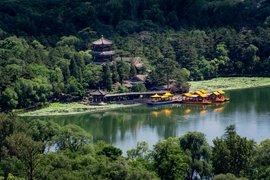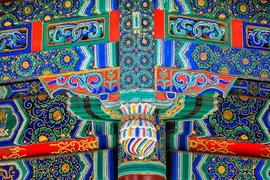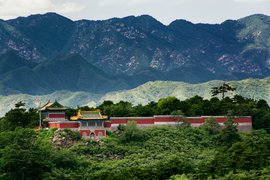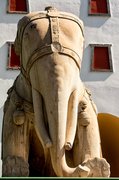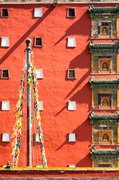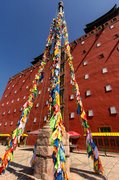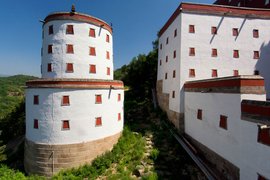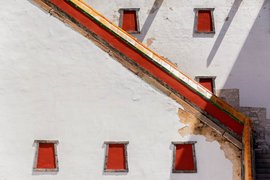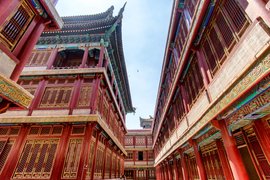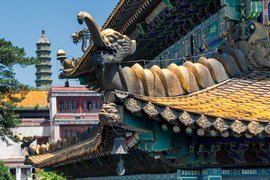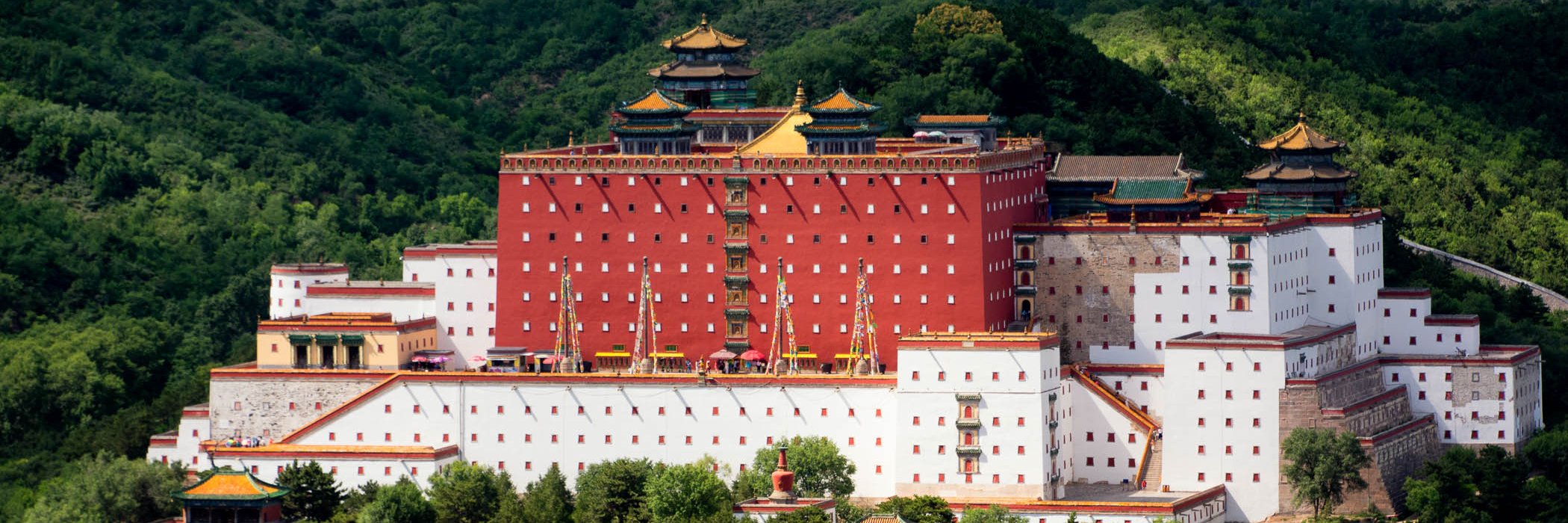China - The Other Summer Palace and Out to the Sea

North of the Great Wall sits Chengde, favoured summer retreat for the emperors of the Qing Dynasty escaping from the Beijing heat.
In 1644, as the Ming dynasty was collapsing under the pressure of peasant rebellions. Faced with the rebel army approaching Beijing and the emperor already dead, the general in charge of defending the city opened the gates of the Great Wall at Shanhai Pass and invited the Manchus (who would become the Qing) to help defeat the rebels.
The Manchus, already powerful in the northeast, seized the opportunity. They helped crush the rebellion, then promptly took Beijing for themselves and declared the start of the Qing dynasty.
With the Qings now ruling both sides of the wall, there was nothing to fear this far north of the capital. In those days it was a remote forested area teeming with wildlife suitable for hunting and had a climate better suited to the people from the northern steppe than the sweltering Beijing summers.
The imperial palace sits inside a 10 kilometre wall encompassing lakes, parklands and spreading out over wooded hills. Walking in to the park I’m having to plough through milling crowds and scores of loudhailed tour groups which isn’t boding well for the experience ahead, there seems to be a competition on for who can produce the most noise.
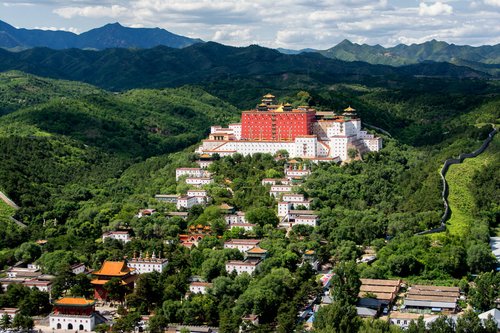
Fortunately, this park is massive. You could fit a reasonable sized town inside and have room left over and none of the throngs seem interesting in moving further in than the first few hundred metres. The park is dotted with lakes, forests, temples and pagodas with some royal retreats dotted around. At the back of the park are some forested hills that give outstanding views across the mountainous countryside, and of the Puning and Putuozongcheng temples, the latter a replica of the Potala Palace in Lhasa.
This is one of the residences of the Panchen Lama, highest ranking lama after the Dalai Lama. The 10th Panchen Lama mysteriously died suddenly after criticising the Chinese government’s treatment of Tibetans. His Tibetan nominated successor also mysteriously disappeared shortly after being named and was replaced by a government nominated one instead, which the Tibetans refuse to recognise with arguments from one side saying the Tibetan successor is being held captive, the other saying he’s living a normal life. One of the Panchen Lama’s responsibilities is in naming the successor to the Dali Lama when he dies ... expect lots of controversy when that happens.
Controversies aside, the temples are outstanding inside and out. The buildings are, rather than their appearance of huge solid blocks from the outside, actually multilevel courtyards with a huge temple in the middle. Escaping down long corridors leads me down creaky floorboards, past ancient murals depicting scenes from the sutras, ancient carvings and through a general miasma of centuries of history. There are many more temples and stupas spread around the forested hill, it's an excellent place to wander and discover - I lost a whole day out here.

The following day, I have the great idea of catching a bus out to the coast to the place where the Great Wall meets the sea. I’ve been to the western extremity where it meets the Takloman deserts in Gansu, hiked a decent section in the hills to the south, this seemed like a good way to complete the experience. I’ve had better ideas, I should have known what would greet me there.
The walled town that formed the first gateway through the wall has been turned into a tourist circus with your senses and eardrums assaulted from all sides, and the circus was in town en masse for the weekend.
Where the wall meets the sea, a tsunami of tourists has already washed ashore and it’s a struggle to make it out onto the ramparts, which look suspiciously like they were built last week. To be fair (in what has to go down in history as one of the greatest barfights of all time), 110 years earlier, occupying French and Japanese troops starting drinking, things got out of hand, fights broke out, things escalated quickly and in the morning they all woke to hangovers from hell and noticed that they'd managed to blow apart a significant chunk of the eastern end of the Great Wall.
Sandwiched up against this most historic of sites is an industrial shipyard and docks ... I was greeted with a view very reminiscent of what I saw from the western end at Jiayaguan ... so some sort of completion then.

The Great Industrial Wall - East End
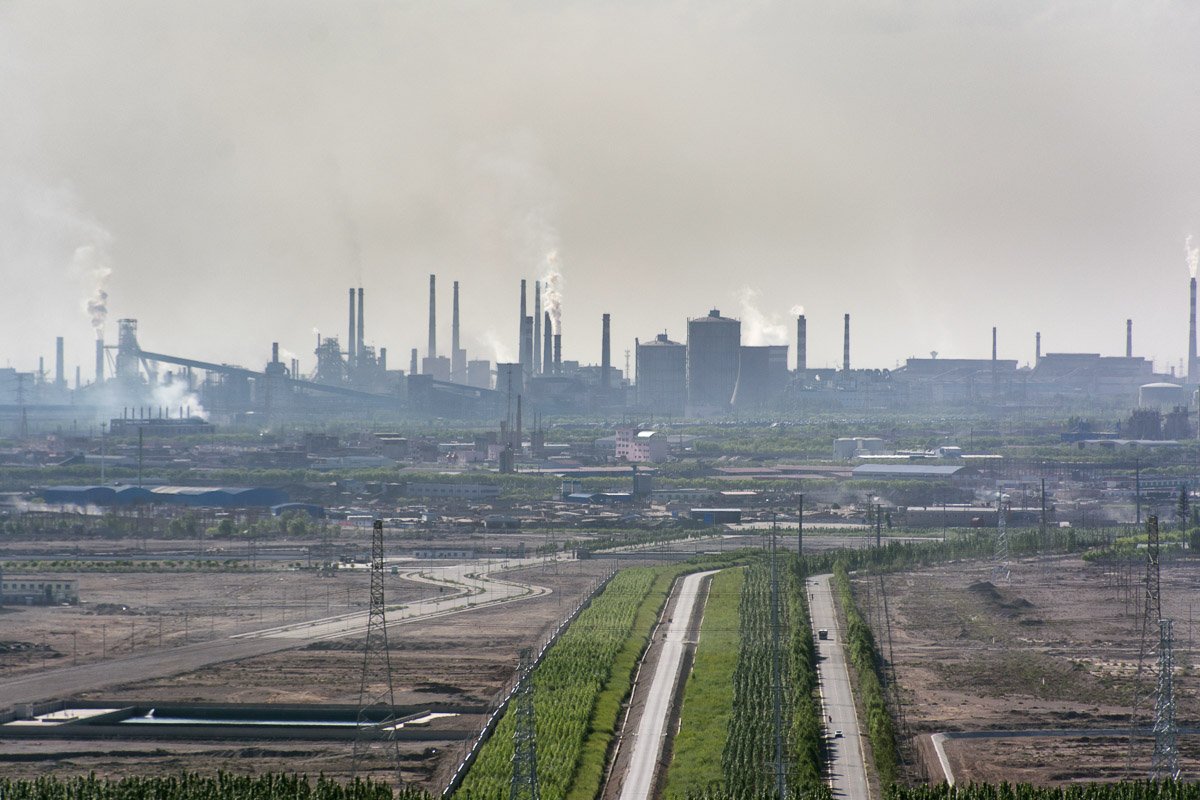
The Great Industrial Wall - West End

I managed to last half a day here before retreating to the comparative peace of Beijing and get on the train north to Mongolia. Not before visiting this excellent landmark however ...
"Welcome to the Greatly Sad Courtyard, we hope you have a truly miserable time"
